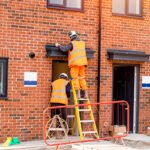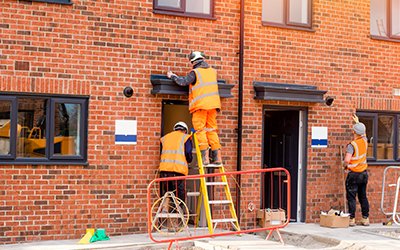The issue of sidewalk repair in NYC is both a matter of public safety and legal liability. New York City is home to millions of pedestrians, and its sidewalks are integral to daily life. When these surfaces deteriorate due to wear, weather, or root upheavals from trees, they can become hazardous for anyone walking the city streets. The question that arises is: who is responsible for ensuring that these sidewalks are repaired, and what are the liabilities for property owners when accidents occur due to poorly maintained sidewalks?
NYC’s Sidewalk Repair Policies and Regulations
New York City has set specific policies to govern the maintenance and repair of sidewalks. Under current law, property owners—whether residential or commercial—are responsible for the upkeep of the sidewalks adjacent to their properties. This includes ensuring that they are free from cracks, holes, and other forms of damage that could lead to accidents. Failing to maintain these sidewalks properly can lead to not only city fines but also civil liability if someone is injured.
The Department of Transportation (DOT) is the body responsible for enforcing sidewalk repair regulations. Property owners can receive a notice from the DOT requiring them to fix any dangerous conditions on their sidewalks within a certain period. If the repair is not completed in the allotted time, the city may step in, carry out the repairs, and bill the owner for the costs incurred.
What Triggers a Sidewalk Repair Notice?
Sidewalk defects in New York City are usually reported through complaints or routine inspections carried out by the DOT. Common problems that result in a sidewalk repair notice include:
- Cracks that are wider than a quarter inch
- Loose or uneven flags
- Trip hazards created by tree roots or subsidence
- Holes or gaps in the pavement
- Obstructions or hazards from construction or other sources
The city prioritizes high-traffic areas and locations where vulnerable populations, such as the elderly or disabled, are more likely to encounter hazards. Property owners are responsible for monitoring the condition of their sidewalks to avoid receiving repair notices.
Liability for Sidewalk Accidents in NYC
If a pedestrian trips and falls due to an unsafe sidewalk, the property owner adjacent to that sidewalk may be held liable for any injuries sustained. This legal responsibility is outlined in the city’s Administrative Code Section 7-210, which places the onus on property owners to keep their sidewalks in a reasonably safe condition.
Neglecting sidewalk repair can lead to lawsuits where the injured party may seek compensation for medical expenses, lost wages, and other damages. In such cases, it’s important for property owners to ensure that they have adequate insurance coverage, as sidewalk accident claims can be costly. Many property insurance policies include coverage for sidewalk liability, but owners should verify their individual policy terms.
Sidewalk Repair Programs and Initiatives
Recognizing the importance of sidewalk safety, New York City offers several programs to help property owners with the cost and logistics of sidewalk repairs. Among these is the Sidewalk Repair Program, which assists property owners by providing the following:
- Free inspections by city officials to assess sidewalk damage
- Recommendations on how to address root-related issues (tree roots are a common cause of sidewalk damage in NYC)
- Access to licensed contractors who specialize in sidewalk repairs
- Flexible payment plans for the cost of repairs conducted by the city
Additionally, New York City has a tree maintenance program, wherein the Parks Department helps mitigate the damage caused by tree roots. This is crucial for maintaining sidewalk safety while also preserving the city’s urban canopy.
Fines and Penalties for Non-Compliance
Failure to address sidewalk repair notices from the city can result in fines and additional penalties. If a property owner ignores a DOT-issued repair notice, the city can step in to carry out the necessary repairs and then charge the property owner for both the repair costs and any administrative fees associated with the process.
Moreover, unresolved sidewalk defects can lead to repeated citations, each of which may come with increasing penalties. In some cases, legal action can be pursued by the city or injured parties, making the cost of non-compliance far outweigh the expense of timely repairs.
How to Handle Sidewalk Repairs as a Property Owner
Navigating the process of sidewalk repair in NYC can be complex, especially for those unfamiliar with the city’s regulations. Property owners should take proactive measures to manage this responsibility, including:
- Regular Inspections: Property owners should periodically check the condition of their sidewalks for any signs of damage or deterioration. This can help to identify problems early and address them before they escalate.
- Hiring Licensed Contractors: When a sidewalk repair is needed, it is essential to hire contractors who are familiar with NYC’s stringent sidewalk repair regulations. The city maintains a list of approved contractors who meet their qualifications.
- Monitoring Tree Growth: Tree roots are a leading cause of sidewalk damage in New York City. Property owners should work with the Parks Department to manage trees adjacent to their sidewalks and mitigate the risk of root damage.
- Staying Informed: Keeping up-to-date with the latest sidewalk maintenance laws and guidelines from the DOT can help property owners stay compliant and avoid unnecessary fines or penalties.
The Role of the DOT and Parks Department
The Department of Transportation (DOT) and Parks Department work closely with property owners to ensure the city’s sidewalks remain safe. The DOT handles the regulatory aspect, issuing notices for repairs and overseeing compliance, while the Parks Department assists with tree-related sidewalk issues.
In cases where tree roots are the cause of sidewalk damage, the Parks Department may authorize specific repair techniques or provide guidance on how to avoid damaging the tree while repairing the sidewalk. Working in tandem with both departments can streamline the process and minimize potential complications for property owners.
Conclusion
The responsibility of sidewalk repair in NYC is squarely placed on property owners, making it vital for anyone who owns property in the city to stay aware of their obligations. Timely and proper sidewalk maintenance not only helps avoid costly fines but also mitigates the risk of legal liability in the event of an accident. By understanding the city’s sidewalk repair regulations, working with licensed contractors, and collaborating with city departments, property owners can ensure that their sidewalks remain safe and compliant.

















































